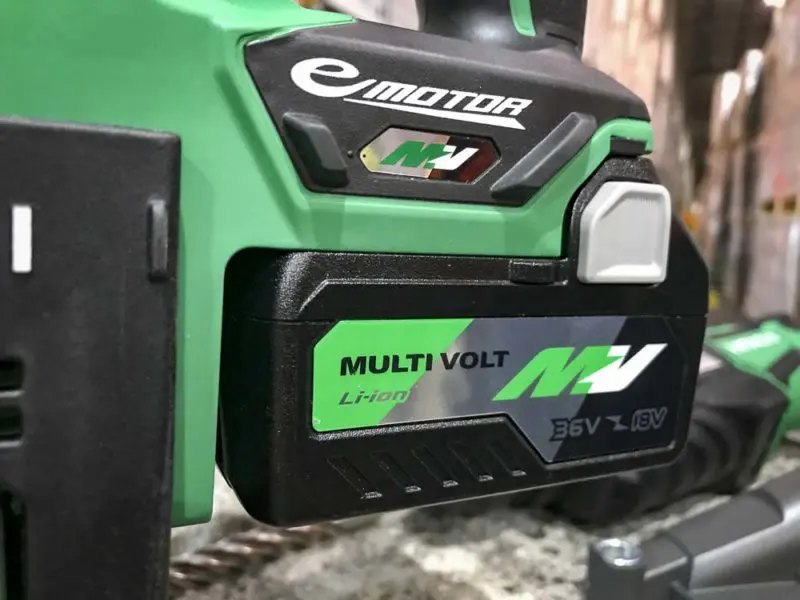Battery-powered tools have come a long way in the last decade. Smaller handheld power tools have moved to lithium-ion as an energy storage medium from older nickel-cadmium batteries. The improved power and runtime, plus a significant weight reduction, proved that to be a great transition. For larger tools like zero-turn mowers and small vehicles, the transition involves migrating from gas or lead acid batteries to lithium-ion. Regardless of what type of battery-powered tools you use, how long do lithium-ion batteries last remains our most-asked question from readers.
We talked to product managers and executives at Bosch, DeWalt, Metabo HPT, Makita, Milwaukee, and Ridgid to get some answers straight from the manufacturers. While the answers vary here and there, there’s a general consensus on the major points.
Table of Contents
- How Many Charging Cycles Can You Expect to Get?
- How Charging Cycles Affect Lithium-ion Battery Capacity
- How Long Do Lithium-ion Batteries Last in Storage?
- Heat Kills Lithium-ion Battery Packs
- How Long Do Lithium-ion Batteries Last Compared to NiCad Batteries?
- Going Beyond the Lithium-ion Longevity Question
- Let’s Summarize
How Many Charging Cycles Can You Expect to Get?
When we talk about how long a lithium-ion battery lasts, we’re ultimately talking about how many charging cycles it has. However, the number of charging cycles depends on how you charge your batteries and what you consider a charging cycle. Do you charge your batteries at the end of the day? Do you change them as soon as you finish using the tool—or do you pop them on at lunch so they’re topped off when you return to work? Lastly, battery configuration and capacity play a part, as do ambient storage temperatures.
Unfortunately, most manufacturers define a charge cycle as any time you pop the battery on the charger and let it start working. While one of the strengths of lithium-ion batteries is the lack of cell memory, you can still exhaust the maximum longevity of the cells (and the pack) by charging them more frequently than you need to.

At this point in time, most power tool manufacturers claim you should expect to get over 1,000 charge cycles out of any given battery. That equates to 2.7 years if you charge your pack once per day or 3.8 years if you only factor in a 5-day week. Some manufacturers claim 2,000 charge cycles, in which case you can double those numbers.
How Charging Cycles Affect Lithium-ion Battery Capacity
While manufacturers may differ in their definition of charging cycles, all batteries suffer a decrease in maximum capacity over time. Regardless of what battery you use, each time you cycle/charge a battery, it loses a tiny bit of its maximum storage capacity. As much as we’d like to think this won’t practically affect your performance or runtime—it really does.

In fact, several studies, indicate that battery capacity may drop as much as 40% or more after 1000 cycles. Some companies, like Makita, use a “smart” system that accounts for this. Their chargers and batteries use a communication system that recognizes a battery’s current charge level and temperature. Then, the charger regulates the optimal current, voltage, and temperature to recharge the battery. This process helps extends the useful life of the battery. It also extends the amount of charging cycles the battery can go through. That’s just one example of why you may want to stick with original manufacturer batteries and chargers.
How Long Do Lithium-ion Batteries Last in Storage?
How long lithium-ion batteries last when used is one thing—but what about when you store them? After all, that might affect whether or not you want to pick up that “used” battery at the flea market.
A number of factors affect a battery pack’s lifespan on the shelf. Let’s start with some best practices. You want to store your batteries at approximately 50% charge if you don’t intend to use them again within a week or so. Some manufacturers may have slight variations on that, but in general, 50% ensures you don’t decrease the battery storage capacity while it sits.
From time to time you also need to check your battery packs as they might drain slightly. Ensure the packs don’t completely drain by keeping them around 50% or whatever level the manufacturer recommends. Do that, and you can expect your batteries to last up to 3-5 years in storage.
Heat Kills Lithium-ion Battery Packs
You also want to store batteries in a cool, dry location. The worst thing you can do (besides throw a battery in the pool) is store a battery at full charge in the heat of summer. Planning on storing your batteries in a hot shed? Don’t. Move them to your garage or somewhere you can temper the heat somewhat and reduce the pack temperature.
High temperature kills lithium-ion batteries. Want to cut your number of cycles in half, store your packs in the heat fully charged.

If a battery pack drops below a certain charge capacity, the pack can become unchargeable. This is due to the charger not registering the pack as in a state to accept a charge. A battery that falls below the minimum level signals the end of its usable life (though it’s possible to “resurrect” some dead batteries).
Editor’s Note: Check out these lithium-ion battery charging tips for our recommendations to maximize life and run-time.
How Long Do Lithium-ion Batteries Last Compared to NiCad Batteries?
We know, NiCad batteries have been long gone for so long, many don’t even remember them. Still, it serves as a sort of baseline in some people’s thinking. Because Li-ion has a superior energy density, a comparable NiCad battery will be larger and heavier. From a functional standpoint, Li-ion also doesn’t experience voltage drops as it depletes. So what about shelf life?

Both varieties of the battery will self-discharge in storage. However, NiCad self-discharges at a rate of about 1–3% per day. Because of this, it wasn’t uncommon for an unused NiCad battery to require a recharge every couple of weeks or so—even if you never used it!
Li-ion batteries self-discharge much more slowly. Almost imperceptibly, in fact. The rate at which this discharge occurs largely revolves around the quality of the pack design.
Li-ion batteries also have a lot more technology at work than NiCad batteries ever did. Really, the comparison seems a little unfair and dated. Many manufacturers employ overload, over-discharge, and overheating protection for their Li-ion batteries. All of these technologies protect the battery. They also extend the expected life cycle. NiCad and NiMH batteries typically didn’t have these protections in place.

So, while some may claim that NiCad batteries were also expected to last through 1000 charging cycles—you had to charge those packs many more times during their use. You also had to deal with the dreaded “battery memory effect”. OK, that’s the last time we’ll talk about old technology—we promise!
Editor’s Note: Check out these lithium-ion battery maintenance tips to keep your batteries healthy over time.
Going Beyond the Lithium-ion Longevity Question
Answering how long lithium-ion batteries last often deals with the question of replacement and ongoing costs. After all, lithium-ion batteries cost more than either lead acid or Ni-Cad. They certainly cost more than a tank of gas!
So while the move to cordless convenience requires a significant upfront investment, it also needs to factor in eventual replacement. Before moving onto a cordless tool line, discerning Pros need to understand the long-term implications of this investment.
Related questions include:
- What can you expect to pay for replacement battery packs?
- For larger equipment, how much do you save in fuel and maintenance vs replacing a battery pack?
After answering the question of how long lithium-ion batteries last, we also need to answer these related complicated issues to get the whole picture.
Let’s Summarize
So, how long do Lithium-ion batteries last? To sum it all up, the bare minimum that most manufacturers expect from their batteries is around 3 years or 1,000 charging cycles. With that said—we say “put your warranty where your mouth is.” Bosch, DeWalt, Metabo HPT, Makita, Milwaukee Tool, EGO, and Ridgid all warranty their Lithium-ion batteries for 2–3 years.
That’s a real good indicator of their minimum expectations for those packs. Move to a company like Greenworks 60V and you can find a 4-year battery warranty. We hope to see more companies extend these warranty periods as technology and reliability improves.
If you take care of your batteries, there’s no reason not to expect them to last at least that long or longer.



